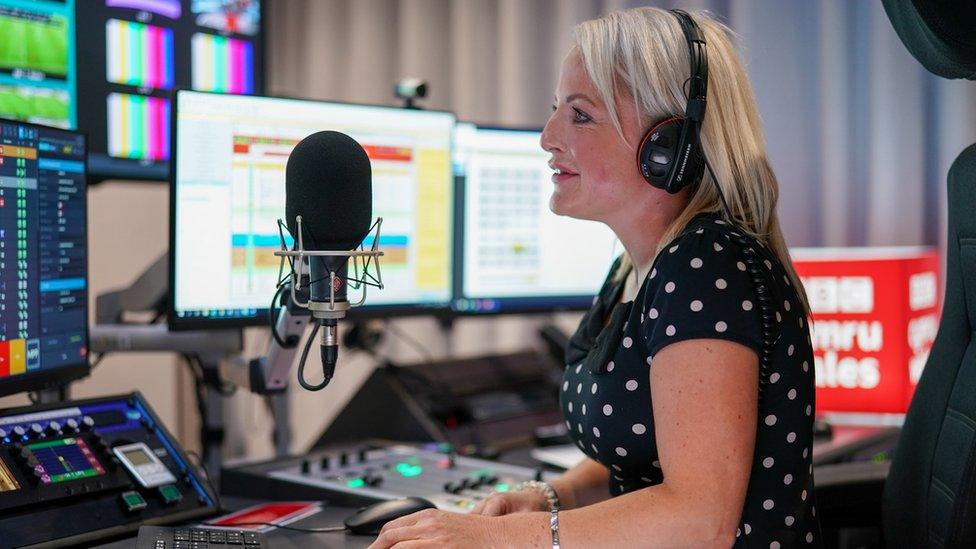BBC Wales Broadcasting House workers 'felt like pioneers'
- Published
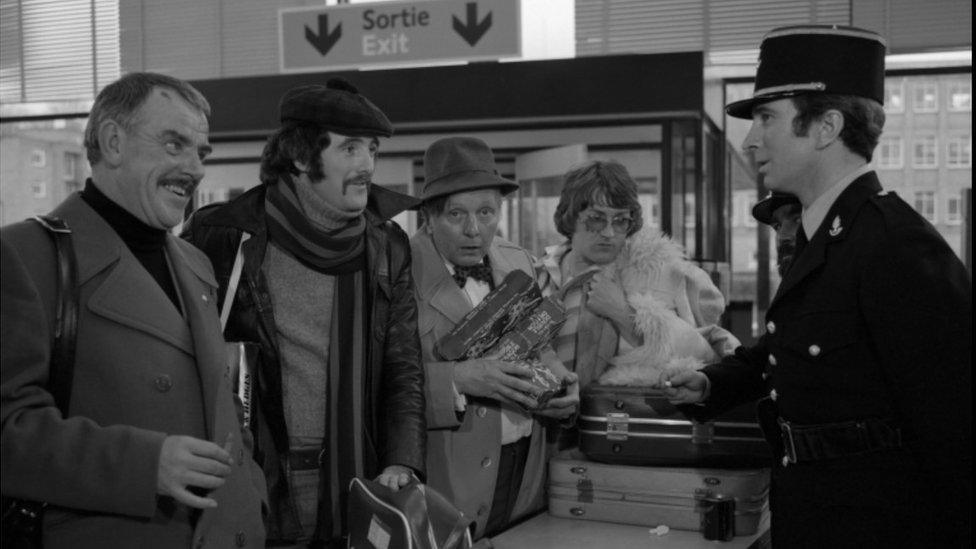
The reception area of Broadcasting House doubled as a Paris airport for the 1978 comedy Grand Slam
Loud swearing broadcast to the nation following a Gareth Edwards try and panic after a presenter passed out during a live radio show.
Sound engineer Richard Cobourne describes working at Cardiff's Broadcasting House (BH) during its early years as feeling like "pioneers".
"You almost thought, if something went wrong, it would be patched up without anyone noticing," he says.
BBC Wales is leaving its Llandaff home of 54 years for a new city centre base.
It was where a distinctive form of Welsh broadcasting was developed - with the BBC's longest-running drama Pobol y Cwm originally filmed there and the reception area doubling as an airport for cult classic film Grand Slam.
National news output also started taking shape over the first decade and Mr Cobourne joined in 1974 at a time of great expansion, with BBC Radio Wales and BBC Radio Cymru both planned.
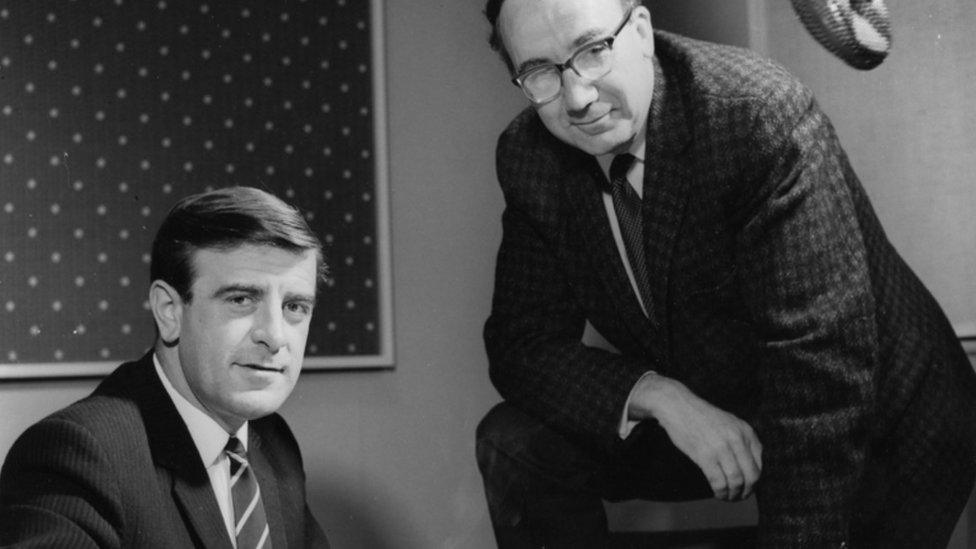
Vincent Kane with Good Morning Wales editor Brian Evans in 1968
His life is entwined with the building more than most.
He met and married "the boss's daughter", Sue, who also worked there, with his father-in-law Harry Hockley, the man sent from London to oversee the building of BH and his mother-in-law vision mixer Beryl Hockley.
One of his first jobs saw him running up and down the touchline with a fluffy microphone recording the sound for a Wales v France game in 1975, and trying to keep pace with Gareth Edwards as he scored.
"I shouted a swear word very loudly in celebration and later had a dressing down from the producer who said 'you didn't have to share that with the country'."
"I went to apologise to [commentator] Bill McLaren, who said 'don't worry, you only shouted what three million Welsh people were thinking'."
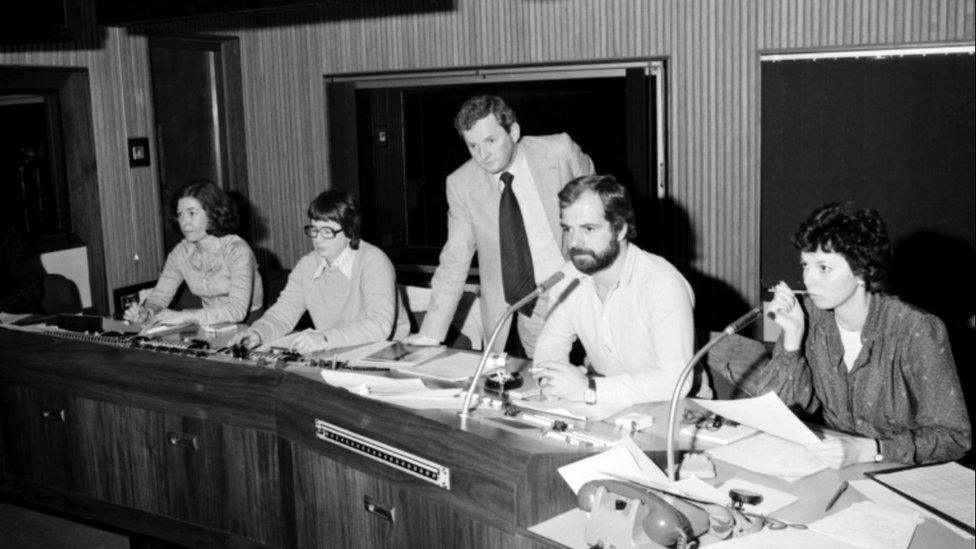
The C1 studio gallery in the 1980s
He said there was a buzz, with people aware they were setting the daily news agenda for Wales - but described work as "very labour intensive", with around 80 people in the audio department alone.
The C1 studio was "very high-tech", operating seven days a week for shows such as sitcom Terry and June and drama The Talisman, while C2 was used for children's television in the morning, with Wales Today and the Welsh language Heddiw in the afternoon.
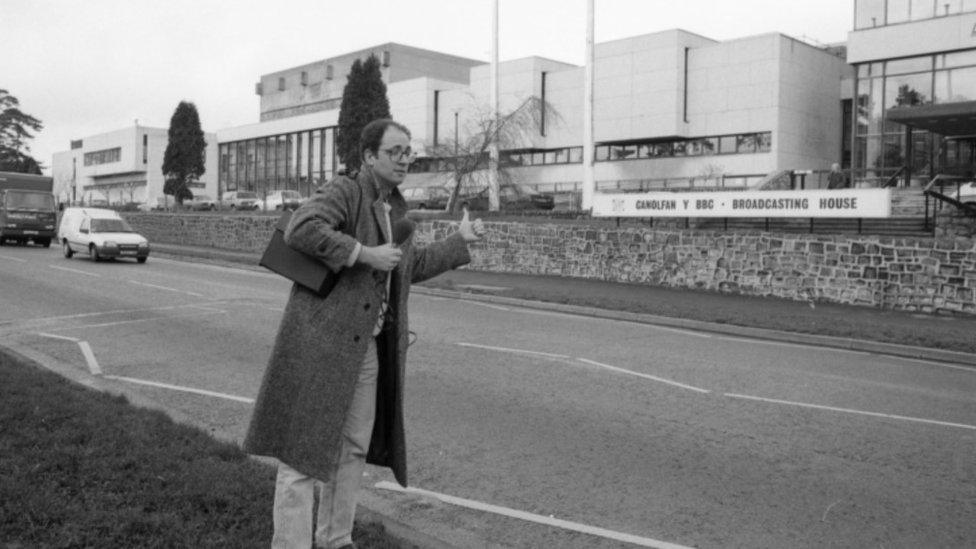
BBC Radio Wales presenter Mal Pope outside BH
"A lot of people ask why are they leaving? She was magnificent. Did a job when broadcasting was evolving on television and radio, no question. But regrettably, it's no longer fit for purpose," he said.
"When it was built, a video edit suite and a small house were a similar size. A camera took an hour to get in the right position.
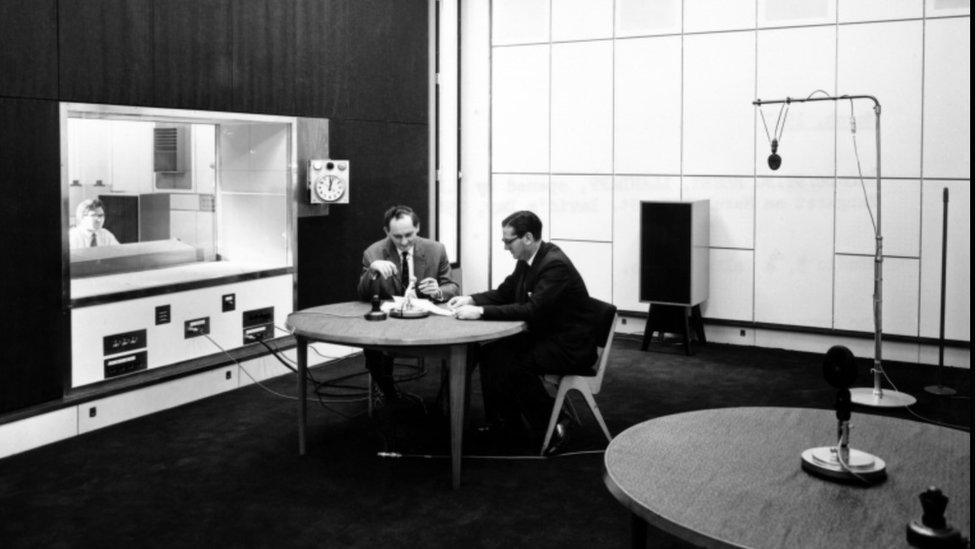
Welsh radio news bulletins and shows originally went out on BBC Radio 4
"Everything was analogue, it took much longer. The control room was 50m by 30m. Now you can almost do it on a laptop."
Television dramas
Ann Fowler joined from art college in 1974 to work in the sewing room, helping to create costumes for shows such as Hawkmoor, based on Twm Sion Cati or "the Welsh Robin Hood", and The Enigma Files.

Ann Fowler visited museums around the UK as she researched costumes worn by characters in dramas like Hawkmoor
But it is The Talisman that stands out - set during the crusades in Syria, but filmed in 1980 during a very wet summer on location at Trefil Quarry, Blaenau Gwent.
"We were getting there at 5am in the morning to film. But the weather was so bad, costumes kept getting ruined," she said.
"In the end, it took three months and having to film 90 hours a week to get it done.
"It would have been cheaper to take everyone to Spain for three weeks to do it."
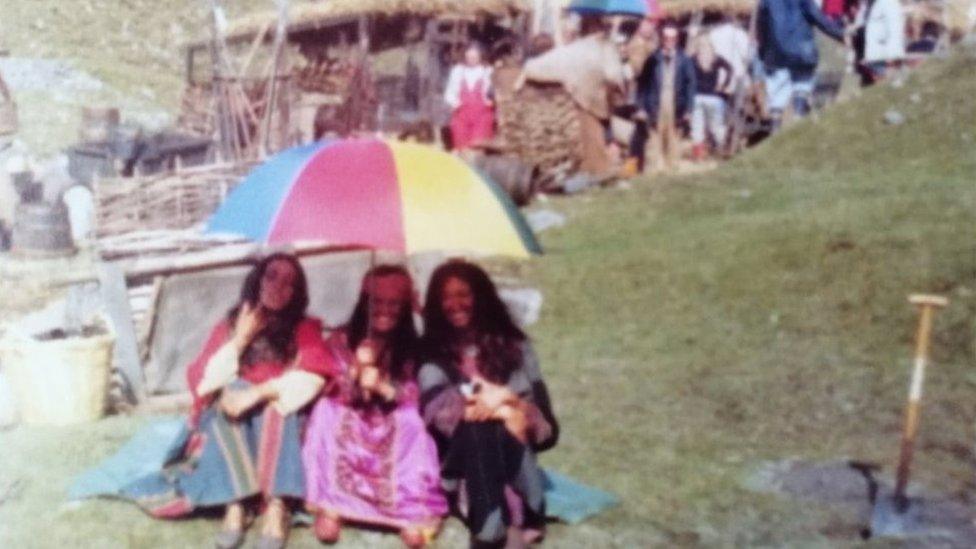
The attire was from the Middle East in a different age - but those filming The Talisman needed umbrellas because of the Welsh weather
While topics changed during BH's lifetime, some subjects remained in the spotlight - including the European Union.
Brexit may have dominated the news agenda over the past few years, but in 1989, Judith Hawkins worked with Sir Anthony Hopkins on Heartland - a drama about how European Economic Community rules changed the way rural Welsh farmers worked after generations.
"Farmers ended up having to throw surplus milk away. It was about how it affected their livelihood and families," she said.
"He [Sir Anthony] was an interesting man to work with. Very complex and a great mimic.
"He had just finished filming [US drama] Hollywood Wives and I remember him saying it was the best job he ever had."

A large scenery workshop saw props created for dramas in the 1960s
Television and radio
In the early 1970s, news programmes were not based at BH, with the English language service produced out of a converted chapel in Adamsdown and the Welsh language Heddiw on Newport Road.
These were also the days before S4C and television bulletins followed each other on BBC One Wales, something John Shone called "a bit bizarre" thinking back.
He added: "They shared the Wales Today studio, which meant their producers and presenter had to drive over about an hour before they went on air."
Welsh radio output was also finding its feet, with the English language news originally appearing on BBC Radio 4.

The space needed to produce television output has reduced dramatically since the 1960s
The Good Morning Wales programme on the station also switched frequencies for an hour to allow a Welsh language programme to go out.
But things started to come together in 1974, when all news outlets moved to BH, and BBC Radio Cymru launched in 1977 followed by BBC Radio Wales a year later.
And even though it was not based at BH, S4C then went on air in 1982, meaning the country's broadcasting landscape was complete.
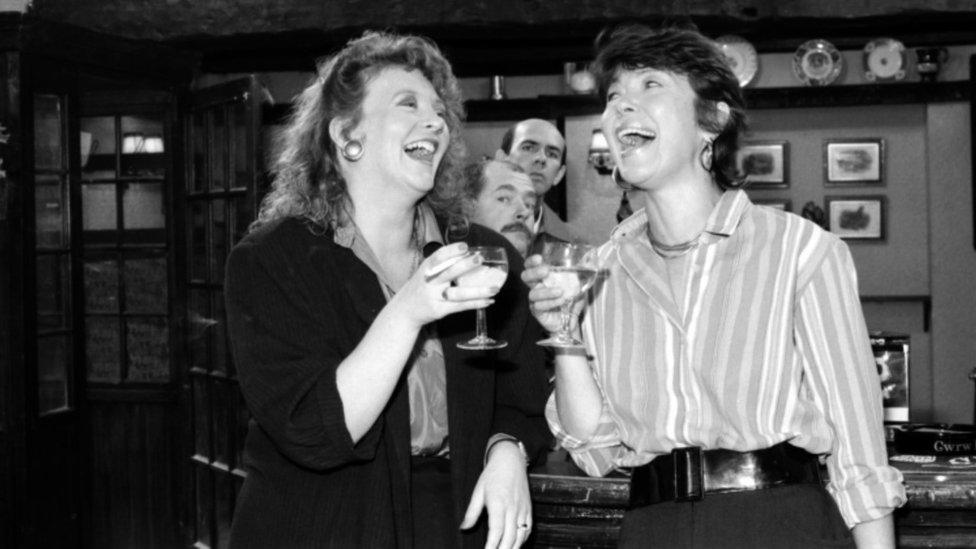
Pobol y Cwm was filmed at BH from 1974 until 2011 and originally went out on BBC Wales TV, switching to S4C after the station's launch in 1982
In the days before digital technology you needed total precision as a news bulletin went live.
But things sometimes went wrong, as Paul Francis, a cameraman in the early 1980s, found out.
"We had to pan round from the presenters in Studio B quickly to line up the name captions printed on pieces of card, and on music stands," he said.
"I misjudged the distance once and there was an almighty clatter on air as one of the stands went flying after being hit by the lens."
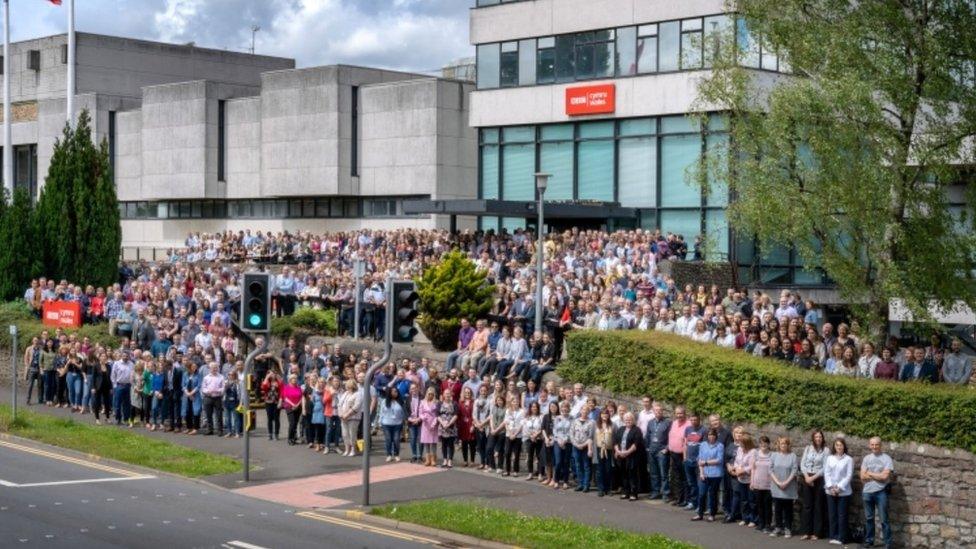
BBC Wales staff gathered on the steps of BH in June 2019 as departments began to move out
BH grew to become a "focal point, a point of identity" that people who did not work at the BBC could recognise, media expert Jamie Medhurst of Aberystwyth University said.
"With radio in both languages, and even though S4C wasn't based there, the fact Pobol y Cwm was filmed in the drama studios - the whole landscape was there," he added.
Describing it as an "iconic building", he said it spoke of the fact Wales had its own broadcasting centre whereas before it had come under "the west region" with parts of England.
After 54 years, with almost the last show produced at BH, the new headquarters at Central Square are set to help shape Wales' agenda.

The new headquarters are at the heart of a redevelopment opposite Cardiff Central station
- Published25 September 2020
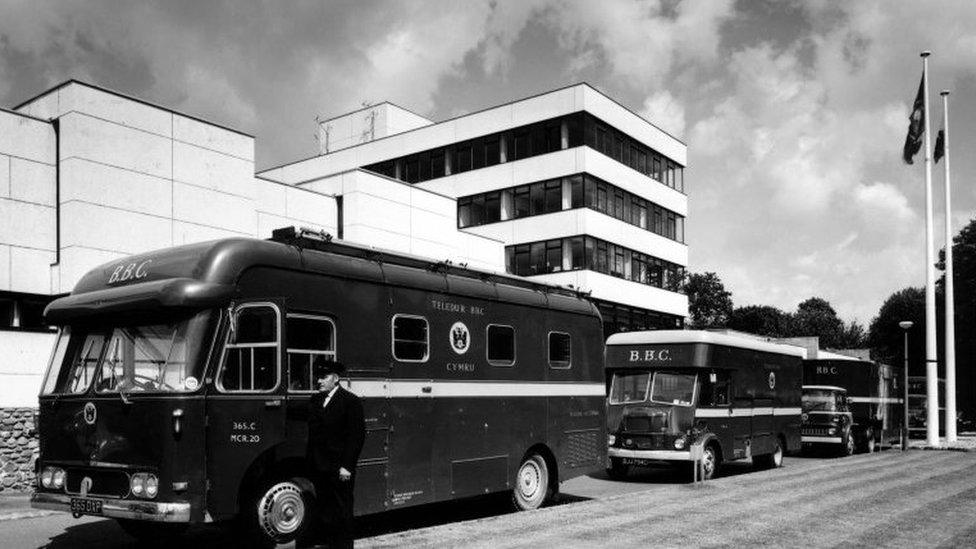
- Published17 April 2018

- Published15 July 2020
